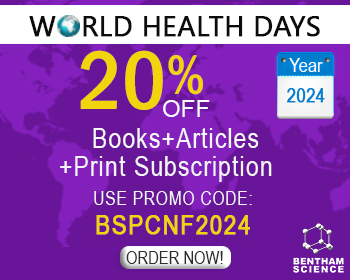Abstract
Background: Drug repurposing, the application of known drugs and compounds with a primary non-oncology purpose, might be an attractive strategy to offer more effective treatment options to cancer patients at a low cost and reduced time.
Methods: This review described a total of 10 kinds of non-oncological drugs from more than 100 mechanical studies as well as evidence from population-based studies. The future direction of repurposed drug screening is discussed by using patient-derived tumor organoids.
Results: Many old drugs showed previously unknown effects or off-target effects and can be intelligently applied for cancer chemoprevention and therapy. The identification of repurposed drugs needs to combine evidence from mechanical studies and population-based studies. Due to the heterogeneity of cancer, patient-derived tumor organoids can be used to screen the non-oncological drugs in vitro.
Conclusion: These identified old drugs could be repurposed in oncology and might be added as adjuvants and finally benefit patients with cancers.
Keywords: Drug repurposing, anti-cancer, population cohort, drug screening, organoid, future direction of cancer.
[http://dx.doi.org/10.2217/fon-2015-0035] [PMID: 27079684]
[http://dx.doi.org/10.1056/NEJMoa1113205] [PMID: 22397650]
[http://dx.doi.org/10.1038/nrclinonc.2015.169] [PMID: 26483297]
[http://dx.doi.org/10.1056/NEJMp1500523] [PMID: 25635347]
[http://dx.doi.org/10.1097/PPO.0000000000000360] [PMID: 30896529]
[http://dx.doi.org/10.1038/nrd3681] [PMID: 22378269]
[http://dx.doi.org/10.1126/science.1105511] [PMID: 15542455]
[http://dx.doi.org/10.1007/s12033-007-0069-2] [PMID: 18095187]
[http://dx.doi.org/10.7554/eLife.17044 ] [PMID: 28100397]
[http://dx.doi.org/10.1136/amiajnl-2014-002649]] [PMID: 25053577]
[http://dx.doi.org/10.1073/pnas.1612736113] [PMID: 27621439]
[http://dx.doi.org/10.3892/or.2020.7482] [PMID: 32020228]
[http://dx.doi.org/10.1016/j.biopha.2019.109356] [PMID: 31545293]
[http://dx.doi.org/10.21873/cgp.20165] [PMID: 31882549]
[http://dx.doi.org/10.1186/s12885-019-5426-6] [PMID: 30845932]
[http://dx.doi.org/10.1186/s13046-019-1176-1] [PMID: 31027492]
[http://dx.doi.org/10.1016/j.tips.2018.07.006] [PMID: 30150001]
[http://dx.doi.org/10.1038/s41574-018-0104-3] [PMID: 30258089]
[http://dx.doi.org/10.18632/aging.102787] [PMID: 32074084]
[http://dx.doi.org/10.1016/j.cell.2016.11.055]] [PMID: 27984722]
[http://dx.doi.org/10.18632/aging.102622] [PMID: 31831715]
[http://dx.doi.org/10.1021/jacs.0c00650] [PMID: 32069041]
[http://dx.doi.org/10.7150/jca.33029] [PMID: 31897243]
[http://dx.doi.org/10.1002/ijc.32690] [PMID: 31525254]
[http://dx.doi.org/10.1016/j.cmet.2018.08.021] [PMID: 30244975 ]
[http://dx.doi.org/10.1038/s41419-020-2307-5] [PMID: 32041944]
[http://dx.doi.org/10.1016/j.jtho.2018.07.102] [PMID: 30149143]
[http://dx.doi.org/10.1001/jamaoncol.2019.2553] [PMID: 31486833]
[http://dx.doi.org/10.1016/j.celrep.2019.11.079]] [PMID: 31851935]
[http://dx.doi.org/10.1016/j.jhep.2018.11.034] [PMID: 30572006]
[http://dx.doi.org/10.3390/cells9010144] [PMID: 31936169]
[http://dx.doi.org/10.1016/j.ccell.2019.03.007]] [PMID: 31031016]
[http://dx.doi.org/10.1016/j.molcel.2018.07.030]] [PMID: 30118680]
[http://dx.doi.org/10.1073/pnas.1818357116] [PMID: 30659155]
[http://dx.doi.org/10.1001/jamaoncol.2019.0892] [PMID: 31145418]
[http://dx.doi.org/10.1126/sciadv.1601756] [PMID: 28028542]
[http://dx.doi.org/10.1016/j.celrep.2018.11.043]] [PMID: 30540938]
[http://dx.doi.org/10.15252/emmm.201505421] [PMID: 27138566]
[http://dx.doi.org/10.1038/bjc.2011.289] [PMID: 21847126]
[http://dx.doi.org/10.1002/hep.30813] [PMID: 31206214]
[http://dx.doi.org/10.1016/j.ebiom.2019.06.048] [PMID: 31278071]
[http://dx.doi.org/10.18632/aging.102644] [PMID: 31905343]
[http://dx.doi.org/10.1172/JCI121985] [PMID: 30907747]
[http://dx.doi.org/10.1200/JCO.18.00636] [PMID: 30702971]
[http://dx.doi.org/10.1200/JCO.2016.71.3743] [PMID: 28489511]
[http://dx.doi.org/10.1016/j.eururo.2018.09.020] [PMID: 30279015]
[http://dx.doi.org/10.3892/ijmm.2019.4241] [PMID: 31198976]
[http://dx.doi.org/10.12659/MSM.919218] [PMID: 31568401]
[http://dx.doi.org/10.1002/mc.22904] [PMID: 30182439]
[http://dx.doi.org/10.3390/cancers12010136] [PMID: 31935820]
[http://dx.doi.org/10.1080/10520295.2019.1700429] [PMID: 31937145]
[http://dx.doi.org/10.1016/j.celrep.2016.12.051] [PMID: 28076793]
[http://dx.doi.org/10.1038/s41467-018-03225-9] [PMID: 29491374]
[http://dx.doi.org/10.1186/s12885-018-4584-2] [PMID: 29929491]
[http://dx.doi.org/10.1016/j.ejphar.2019.05.017] [PMID: 31082369]
[http://dx.doi.org/10.3892/or.2019.7134] [PMID: 31059051]
[http://dx.doi.org/10.1038/s41388-019-0802-x] [PMID: 30967635]
[http://dx.doi.org/10.1158/1078-0432.CCR-13-3227] [PMID: 24928945]
[http://dx.doi.org/10.4161/auto.28984] [PMID: 24991840]
[http://dx.doi.org/10.1016/j.biopha.2019.109339] [PMID: 31545270]
[http://dx.doi.org/10.3892/ijo.2019.4824] [PMID: 31268153]
[http://dx.doi.org/10.1186/s13046-018-0938-5] [PMID: 30373678]
[http://dx.doi.org/10.1016/j.semcancer.2017.02.009] [PMID: 28254675]
[http://dx.doi.org/10.1186/s13046-018-0960-7] [PMID: 30477536]
[http://dx.doi.org/10.1038/celldisc.2017.42] [PMID: 29387451]
[http://dx.doi.org/10.21873/anticanres.12612] [PMID: 29848694]
[http://dx.doi.org/10.1158/1535-7163.MCT-18-0936] [PMID: 30642883]
[http://dx.doi.org/10.1007/s00262-017-2057-0] [PMID: 28875329]
[http://dx.doi.org/10.1097/CAD.0000000000000740] [PMID: 30614834]
[http://dx.doi.org/10.1002/ijc.31585] [PMID: 29744876]
[http://dx.doi.org/10.1016/j.canlet.2017.10.020] [PMID: 29080749]
[http://dx.doi.org/10.1186/s13046-019-1303-z] [PMID: 31287013]
[http://dx.doi.org/10.1016/j.canlet.2019.05.026] [PMID: 31128215]
[http://dx.doi.org/10.3390/cancers11091284] [PMID: 31480477]
[http://dx.doi.org/10.1038/s41416-019-0681-5] [PMID: 31844184]
[http://dx.doi.org/10.1016/j.ijrobp.2018.08.046] [PMID: 30196056]
[http://dx.doi.org/10.1530/ERC-19-0341] [PMID: 31846433]
[http://dx.doi.org/10.1158/1535-7163.MCT-17-1094] [PMID: 29592879]
[http://dx.doi.org/10.1097/SLA.0000000000003455] [PMID: 31290765]
[http://dx.doi.org/10.1007/s00432-019-03117-5] [PMID: 31960187]
[http://dx.doi.org/10.1186/s13046-017-0526-0] [PMID: 28399898]
[http://dx.doi.org/10.1016/j.canlet.2016.10.034] [PMID: 27810405]
[http://dx.doi.org/10.1084/jem.20171385] [PMID: 29853607]
[http://dx.doi.org/10.12659/MSM.919347] [PMID: 31833479]
[http://dx.doi.org/10.1002/jcb.27719] [PMID: 30260036]
[http://dx.doi.org/10.1136/gutjnl-2013-306202] [PMID: 24717934]
[http://dx.doi.org/10.3892/ol.2018.8013] [PMID: 29545903]
[http://dx.doi.org/10.3892/or.2018.6842] [PMID: 30542717]
[http://dx.doi.org/10.1002/jcp.27979] [PMID: 30549029]
[http://dx.doi.org/10.1038/onc.2017.289] [PMID: 28846114]
[http://dx.doi.org/10.1172/jci.insight.98921] [PMID: 29875309]
[http://dx.doi.org/10.1080/10428194.2017.1287358] [PMID: 28278721]
[http://dx.doi.org/10.1038/s41586-019-1607-3] [PMID: 31578521]
[http://dx.doi.org/10.1002/prp2.231] [PMID: 27433341]
[http://dx.doi.org/10.1016/j.ejphar.2019.172441] [PMID: 31181210]
[http://dx.doi.org/10.1111/cpr.12402] [PMID: 29094413]
[http://dx.doi.org/10.21873/anticanres.13823] [PMID: 31704843]
[http://dx.doi.org/10.21873/anticanres.12843] [PMID: 30194168]
[http://dx.doi.org/10.3390/cancers11010064] [PMID: 30634506]
[http://dx.doi.org/10.1111/jcmm.14011] [PMID: 30421568]
[http://dx.doi.org/10.1038/s41467-019-09387-4] [PMID: 30918259]
[http://dx.doi.org/10.1186/s40880-018-0309-9] [PMID: 29970185]
[http://dx.doi.org/10.3892/ol.2017.6103] [PMID: 28693139]
[http://dx.doi.org/10.1158/1078-0432.CCR-09-1035] [PMID: 19789329]
[http://dx.doi.org/10.1016/j.drudis.2011.12.010] [PMID: 22192884]
[http://dx.doi.org/10.1158/0008-5472.CAN-06-2126] [PMID: 17079463]
[http://dx.doi.org/10.1038/nature25016] [PMID: 29211715]
[http://dx.doi.org/10.1038/s41388-019-0915-2] [PMID: 31391554]
[http://dx.doi.org/10.1038/s41467-020-14338-5] [PMID: 32001710]
[http://dx.doi.org/10.1016/j.canlet.2017.12.026] [PMID: 29274360]
[PMID: 31285958]
[PMID: 5595238]
[http://dx.doi.org/10.1038/nrc1323] [PMID: 15057291]
[http://dx.doi.org/10.2174/09298673113209990198] [PMID: 23931282]
[http://dx.doi.org/10.1186/s13046-019-1366-x] [PMID: 31656203]
[http://dx.doi.org/10.3892/ol.2017.7645]] [PMID: 29435073]
[http://dx.doi.org/10.3892/ol.2019.10354] [PMID: 31289557]
[http://dx.doi.org/10.1097/CEJ.0000000000000133] [PMID: 25642792]
[http://dx.doi.org/10.4149/neo_2013_052] [PMID: 23581412]
[http://dx.doi.org/10.1002/ijc.11194] [PMID: 12794767]
[http://dx.doi.org/10.1002/mc.20800] [PMID: 21563217]
[http://dx.doi.org/10.1002/ijc.31901] [PMID: 30259971]
[http://dx.doi.org/10.1053/j.gastro.2019.05.012]] [PMID: 31103628 ]
[http://dx.doi.org/10.1053/j.gastro.2018.04.010]] [PMID: 29655834 ]
[http://dx.doi.org/10.1093/jnci/djy144] [PMID: 30329127]
[http://dx.doi.org/10.14309/ajg.0000000000000478] [PMID: 31821177]
[http://dx.doi.org/110.1001/jamaoncol.2019.4328 ] [PMID: 31621809]
[http://dx.doi.org/10.1038/s41395-018-0097-5] [PMID: 29855546]
[http://dx.doi.org/10.14309/ajg.0000000000000055] [PMID: 30676369]
[http://dx.doi.org/10.1093/annonc/mdy541] [PMID: 30566587]
[http://dx.doi.org/10.1093/ije/dyz253] [PMID: 31845990]
[http://dx.doi.org/10.1001/jamainternmed.2018.8342] [PMID: 30882847]
[http://dx.doi.org/10.1016/j.cgh.2018.12.012]] [PMID: 30580092]
[http://dx.doi.org/10.1093/jnci/djy170] [PMID: 30388256]
[http://dx.doi.org/10.1186/s13058-019-1135-y] [PMID: 30999962]
[http://dx.doi.org/10.1002/cncr.32364] [PMID: 31402456]
[http://dx.doi.org/10.1016/j.cell.2015.03.053] [PMID: 25957691]
[http://dx.doi.org/10.1158/2159-8290.CD-16-1154] [PMID: 28331002]
[http://dx.doi.org/10.1016/j.semcancer.2018.06.005] [PMID: 29966678]
[http://dx.doi.org/10.1016/j.cell.2017.11.010] [PMID: 29224780]
[http://dx.doi.org/10.1016/j.stem.2015.12.005] [PMID: 26748754]
[http://dx.doi.org/10.1016/j.cell.2018.11.021] [PMID: 30550791]
[http://dx.doi.org/10.1016/j.semcancer.2020.01.008] [PMID: 31982510]
[http://dx.doi.org/10.1016/j.phrs.2017.07.013] [PMID: 28712971]
[http://dx.doi.org/10.1038/nrd.2018.168] [PMID: 30310233]
[http://dx.doi.org/10.1053/j.gastro.2017.09.009]
[http://dx.doi.org/10.1038/s41467-018-04814-4] [PMID: 29915319]
[http://dx.doi.org/10.2967/jnumed.117.192534] [PMID: 28588148]
[http://dx.doi.org/10.3390/cells8050481] [PMID: 31137590]



























